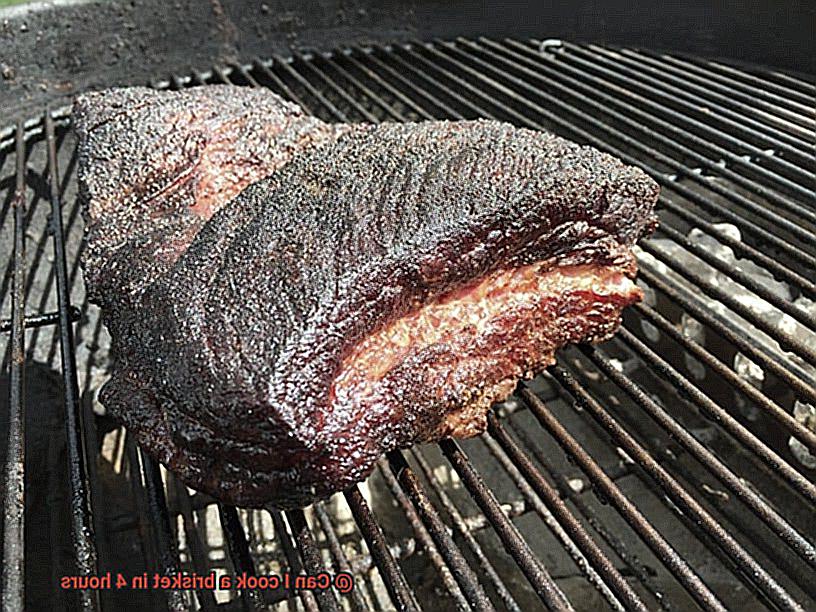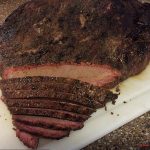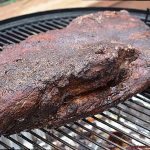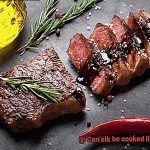Picture this: the tantalizing scent of a sizzling brisket wafting through your kitchen, the anticipation building with every crackle. The only problem? Time. Traditionally, cooking a brisket has been an all-day affair, simmering away for hours on end. But what if I told you that you could achieve that same tender, juicy perfection in just four measly hours? Yes, you heard me right. In this blog post, we’re going to unravel the mystery behind cooking a brisket lightning-fast without sacrificing an ounce of flavor. Buckle up and get ready to uncover the secrets to a mouthwatering brisket in record time. Prepare to have your taste buds blown away.
Contents
What is Brisket?
Brisket, a tantalizing and tender cut of meat that originates from the lower chest area of a cow, has become a beloved favorite among grill masters and barbecue aficionados. To unlock its true potential, brisket demands a slow cooking method that allows ample time for the tough connective tissues to break down, resulting in a texture that melts in your mouth and a flavor that is smoky and savory. In this article, we will delve into the reasons why patience is paramount when it comes to preparing brisket and why rushing the process by cooking it in just 4 hours may not yield the optimal results.
The Brilliance of Slow Cooking:
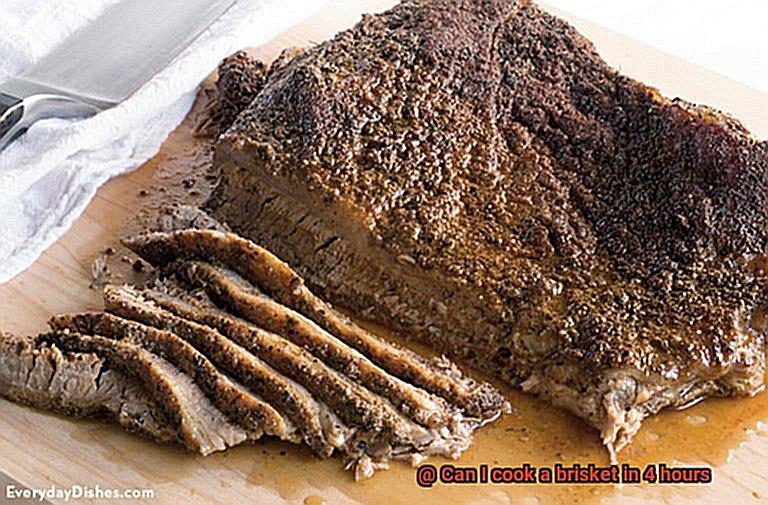
Consisting of two primary muscles – the lean flat and the more marbled point – brisket boasts an abundance of collagen, a connective tissue that contributes to its initial toughness. Slow cooking techniques such as smoking or braising are essential to allow this collagen to transform into gelatin, ultimately rendering a tender and succulent brisket.
The Time and Temperature Equation:
Cooking brisket low and slow is crucial for achieving the pinnacle of tenderness and flavor. Typically, brisket is cooked at a temperature around 225°F (107°C) for 8 to 12 hours, or even longer. This extended cooking period allows the collagen to metamorphose into gelatin, not only tenderizing the meat but also imparting an opulent mouthfeel.
Why a 4-Hour Cook Isn’t Recommended:
While it may be tempting to expedite the process, attempting to cook a brisket in just 4 hours is unlikely to deliver the desired outcome. The higher temperatures required for faster cooking can result in a tougher and drier final product, as the collagen fibers have not had sufficient time to break down properly.
Alternative Techniques for Quicker Cooking:
If time is of the essence, yet you still desire a delectable brisket, there are a few techniques you can employ. One option is to tightly wrap the brisket in foil or butcher paper, which helps retain moisture and accelerates the cooking process. Another approach is to slice the brisket into smaller pieces, allowing for faster cooking while maintaining tenderness.
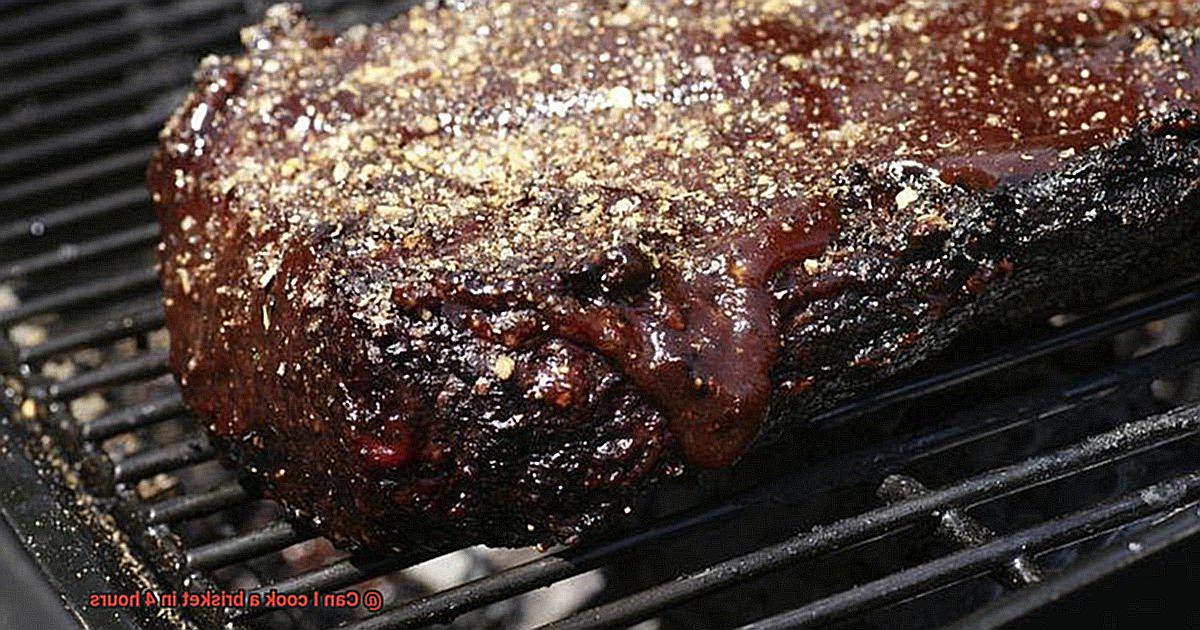
Traditional Cooking Method
If you’re looking to take your barbecuing skills to the next level, then mastering the traditional cooking method for brisket is a must. This tough cut of meat requires time, dedication, and a whole lot of patience to transform it into a tender and flavorful masterpiece. So, grab your apron, fire up your smoker or charcoal grill, and let’s dive into the slow and flavorful journey of traditional brisket cooking.
Slow Roasting or Smoking: The Key to Tender Brisket
When it comes to cooking brisket, slow roasting or smoking is the name of the game. The low-and-slow method allows the connective tissues in this meaty marvel to break down gradually, resulting in a melt-in-your-mouth texture. Trying to rush through the process by cooking a brisket in just four hours would be like trying to sprint a marathon—it’s simply not feasible. To achieve that perfect balance of tenderness and juiciness, we need to plan ahead and allocate ample time for slow-cooking.
Marinating Overnight: Unlocking Flavorful Depths
One of the key benefits of traditional brisket cooking is that it allows the flavors to develop and penetrate deep into every fiber of the meat. By marinating the brisket overnight, we give it an opportunity to soak up all those delicious seasonings and spices, enhancing its taste and tenderness. So, don’t skip this crucial step—let your brisket take a flavorful journey overnight before hitting the grill.
The Right Tools for Slow-Cooking Success
To achieve exceptional results, you’ll need a smoker or charcoal grill that can maintain a steady low heat for an extended period. These tools provide the perfect environment for slow cooking, allowing the meat to bask in smoky goodness while gradually reaching its optimum tenderness. So, invest in a quality smoker or charcoal grill, and let the magic unfold.
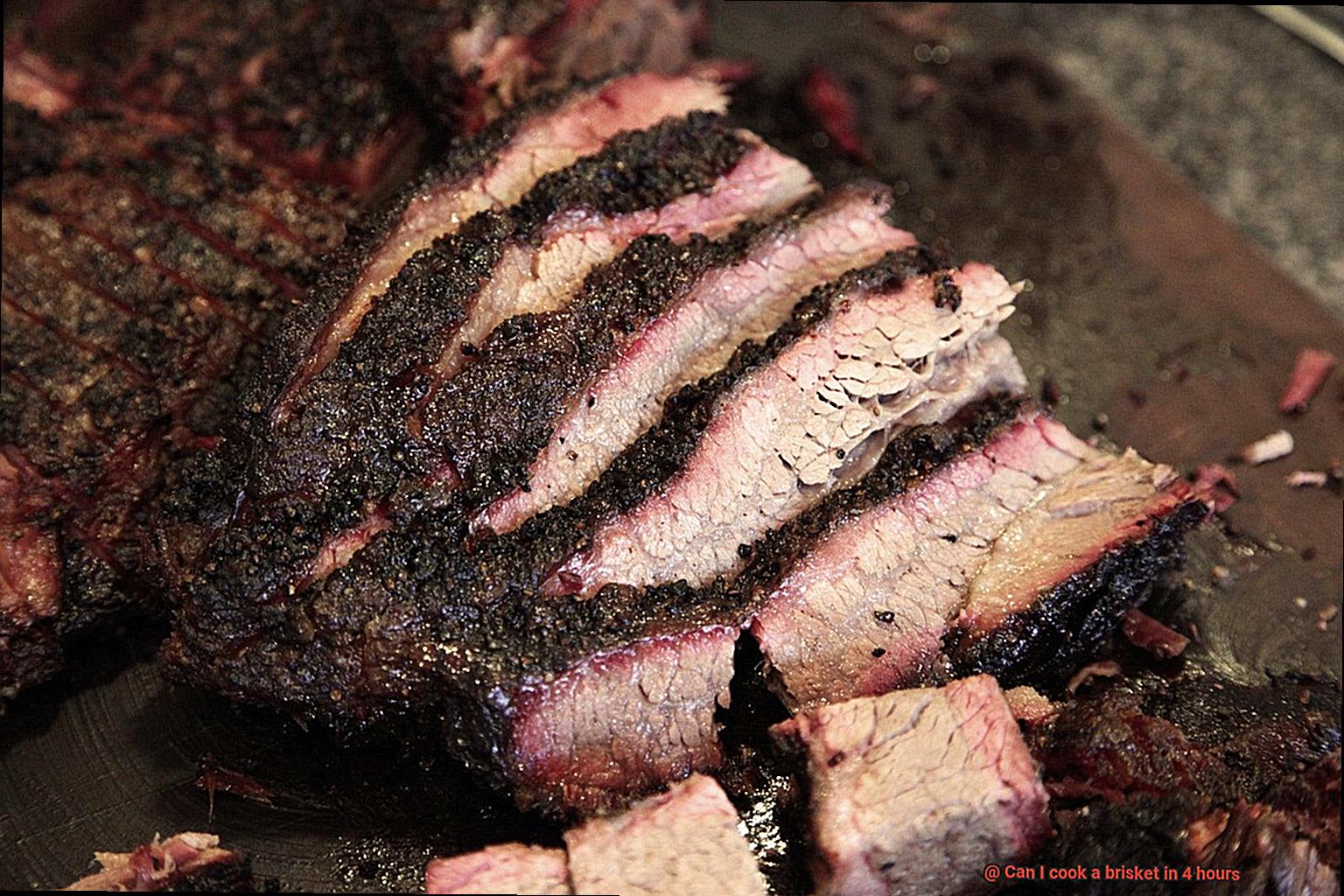
Temperature Matters: Patience and Precision
Monitoring the internal temperature of your brisket is crucial. Aim for a range of 195°F to 205°F to ensure optimal tenderness. Remember, patience is key here too. Allowing your brisket to reach its desired temperature slowly ensures that it cooks evenly and retains those precious juices.
Is it Possible to Cook a Brisket in 4 Hours?
If you find yourself short on time but craving that mouthwatering brisket goodness, you might be wondering if it’s possible to cook this delectable cut of meat in just 4 hours. Well, strap on your apron and prepare for a sizzling journey into the world of brisket cooking.
Traditional brisket recipes call for hours upon hours of low and slow cooking. But fear not, my fellow grillers, because there are alternative techniques that claim to deliver the goods in less time. So, what factors should you consider when attempting this speedy feat? Let’s break it down.
- The Texas Crutch: Wrap that brisket tightly in foil or butcher paper during the cooking process to retain moisture and accelerate cooking time. This method can shave off a few hours, but keep in mind that the texture may differ slightly from slow-cooked brisket.
- The Pressure Cooker Magic: Enter the Instant Pot or pressure cooker. By cooking under high pressure, you can tenderize the meat more quickly and significantly reduce cooking time. However, be aware that you might miss out on the smoky flavor and bark that slow-cooked brisket offers.
- Size Matters: When aiming for a shorter cooking time, consider the size and thickness of the brisket. Smaller cuts or trimmed briskets are more suitable for quicker cooking methods as they cook more evenly and have less connective tissue to break down.
But here’s the catch, my grilling comrades – while it is theoretically possible to cook a brisket in 4 hours using these alternative methods, managing your expectations is crucial. The end result may not be as tender or have the same depth of flavor as the traditional slow-cooked version.
So, whether you’re willing to compromise on traditional techniques depends on your desired outcome. It’s all about experimenting and adjusting your methods to achieve the results that tickle your taste buds. Remember, grilling is an adventure, so embrace the journey and savor every delicious bite.
Factors Affecting Cooking Time
Cooking a brisket to perfection requires careful attention to various factors that can affect the cooking time. The size and thickness of the brisket play a significant role in determining the cooking time. A smaller or thinner brisket will generally cook faster than a larger or thicker one. It is important to select a brisket that suits your desired cooking time. If you’re looking to cook a brisket in 4 hours, it is recommended to choose a smaller cut or trim off any excess fat to reduce cooking time.
The cooking method you choose can greatly impact the cooking time of a brisket. Traditional methods such as smoking or slow cooking in an oven require longer cooking times, typically ranging from 8 to 12 hours or more. However, if you’re short on time and still want to enjoy a delicious brisket, alternative methods like pressure cooking or sous vide can significantly reduce the cooking time while still producing tender and flavorful results.
Maintaining consistent temperature throughout the cooking process is crucial for achieving the desired tenderness in a brisket. Cooking at too high a temperature can quickly dry out the meat, while cooking at too low a temperature may result in tough and chewy meat. It is recommended to use a reliable meat thermometer to monitor the internal temperature of the brisket and ensure it reaches an optimal temperature of around 195-205°F for tender results.
After cooking, it is essential to allow the brisket to rest before slicing and serving. Resting allows the juices to redistribute throughout the meat, resulting in a more flavorful and moist final product. The resting time can vary depending on the size of the brisket, but a general rule of thumb is to let it rest for at least 30 minutes to an hour. Factor in this resting time when planning your cooking schedule.
The quality of the brisket itself can also affect the cooking time. Higher-quality, well-marbled briskets tend to cook faster and produce more tender results compared to leaner cuts. The marbling, which refers to the fat distributed within the meat, helps keep the brisket moist during cooking and contributes to its flavor. When selecting a brisket, look for good marbling and consider investing in a higher-quality cut for optimal results.
Techniques for Cooking a Brisket in 4 Hours
While traditional methods call for low and slow cooking, we’ve got some techniques up our sleeves that will help you achieve mouthwatering results in record time. So strap on your apron, fire up the grill, and let’s dive into the world of brisket cookery.
Technique #1: High-Heat Grilling
To kickstart the cooking process, start by searing your brisket on the grill over intense heat. This creates a beautiful crust on the outside, locking in the juices and infusing an enticing charred flavor. Once seared to perfection, transfer the brisket to a preheated oven set at 325°F. The combination of grilling and oven roasting will deliver tender and succulent results in just a fraction of the time.
Technique #2: Smaller Cuts or Slices
Time is of the essence? Consider slicing your brisket into smaller pieces or opting for a thinner cut. By doing so, you allow the heat to penetrate the meat more quickly and evenly, resulting in faster cooking. Be vigilant with a meat thermometer to ensure the internal temperature reaches your desired doneness.
Technique #3: Pressure Cooking or Instant Pot Magic
For those who adore their culinary gadgets, harnessing the power of a pressure cooker or an Instant Pot can work wonders when it comes to cooking brisket in a shorter amount of time. These appliances utilize high pressure and steam to rapidly tenderize the meat, delivering succulent and flavorful results in no time. It’s important to note that while this technique expedites cooking, there may be a slight difference in texture compared to traditionally cooked brisket.
Considerations:
While these techniques help expedite the cooking process, it’s crucial to keep a few things in mind. Firstly, although your brisket may reach the desired internal temperature, the tenderness and depth of flavor may not match that of a slow-cooked brisket. Traditionalists argue that low and slow cooking allows flavors to develop fully, so bear this in mind.
Secondly, consistent temperature control is paramount to avoid undercooking or overcooking your brisket. Use a reliable meat thermometer to monitor the internal temperature and make necessary adjustments to the heat.
Lastly, allow your brisket to rest after cooking. This crucial step ensures the redistribution of juices and enhances overall tenderness, even when cooking within a shorter time frame.
Checking Doneness with a Meat Thermometer
Using a meat thermometer is an essential tool for ensuring that your food is cooked to the desired doneness. It takes the guesswork out of determining whether your food is cooked to perfection or still needs some time on the grill or in the oven. Let’s dive into how to properly use a meat thermometer to check the doneness of your meats.
First things first, you’ll want to make sure you have a reliable meat thermometer on hand. There are a few different types to choose from, including instant-read thermometers and leave-in thermometers. Instant-read thermometers are great for quickly checking the temperature of your food, while leave-in thermometers can be left in the food throughout the cooking process, allowing you to monitor the temperature without opening the grill or oven.
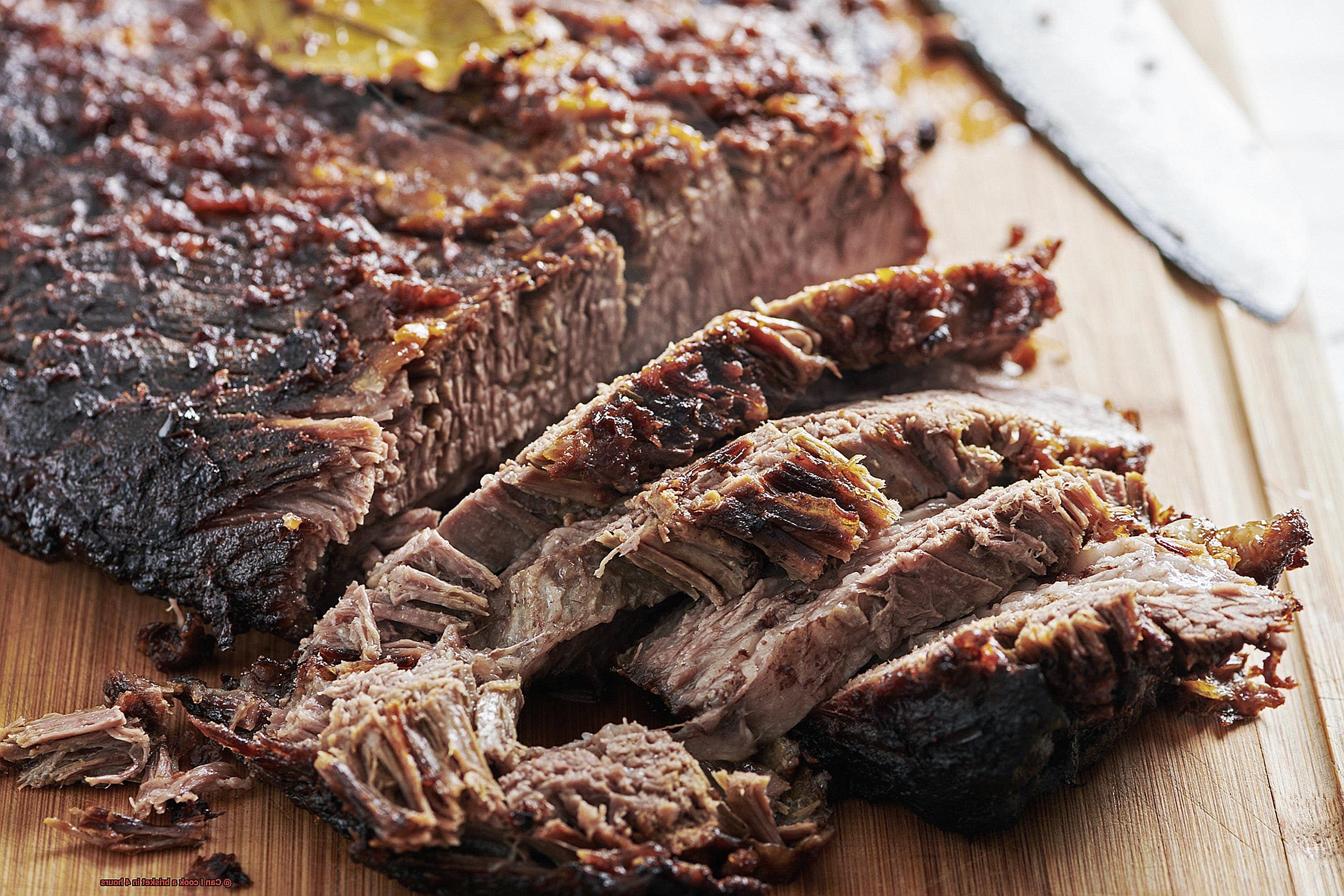
Once you have your thermometer ready, it’s time to check the doneness of your meat. The internal temperature is what you’re looking for, so be sure to insert the probe into the thickest part of the meat without touching any bones or fat. This will give you the most accurate reading.
The temperature range for different levels of doneness can vary depending on the type of meat. Here’s a general guideline:
- Chicken: 165°F (74°C) for breasts and 175°F (79°C) for thighs and drumsticks.
- Pork: 145°F (63°C) for medium-rare and 160°F (71°C) for medium.
- Beef: 125°F (52°C) for rare, 135°F (57°C) for medium-rare, 145°F (63°C) for medium, 160°F (71°C) for medium-well, and 170°F (77°C) for well-done.
Remember that these are just suggested temperatures and personal preferences may vary. It’s best to consult a reliable source or recipe for specific recommendations.
Once you’ve reached your desired internal temperature, it’s important to let your meat rest for a few minutes before serving. This allows the juices to redistribute throughout the meat, resulting in a more flavorful and tender final product.
After each use, be sure to clean your meat thermometer thoroughly with warm soapy water or follow the manufacturer’s instructions for cleaning. Store it in a safe place to prevent damage and contamination.
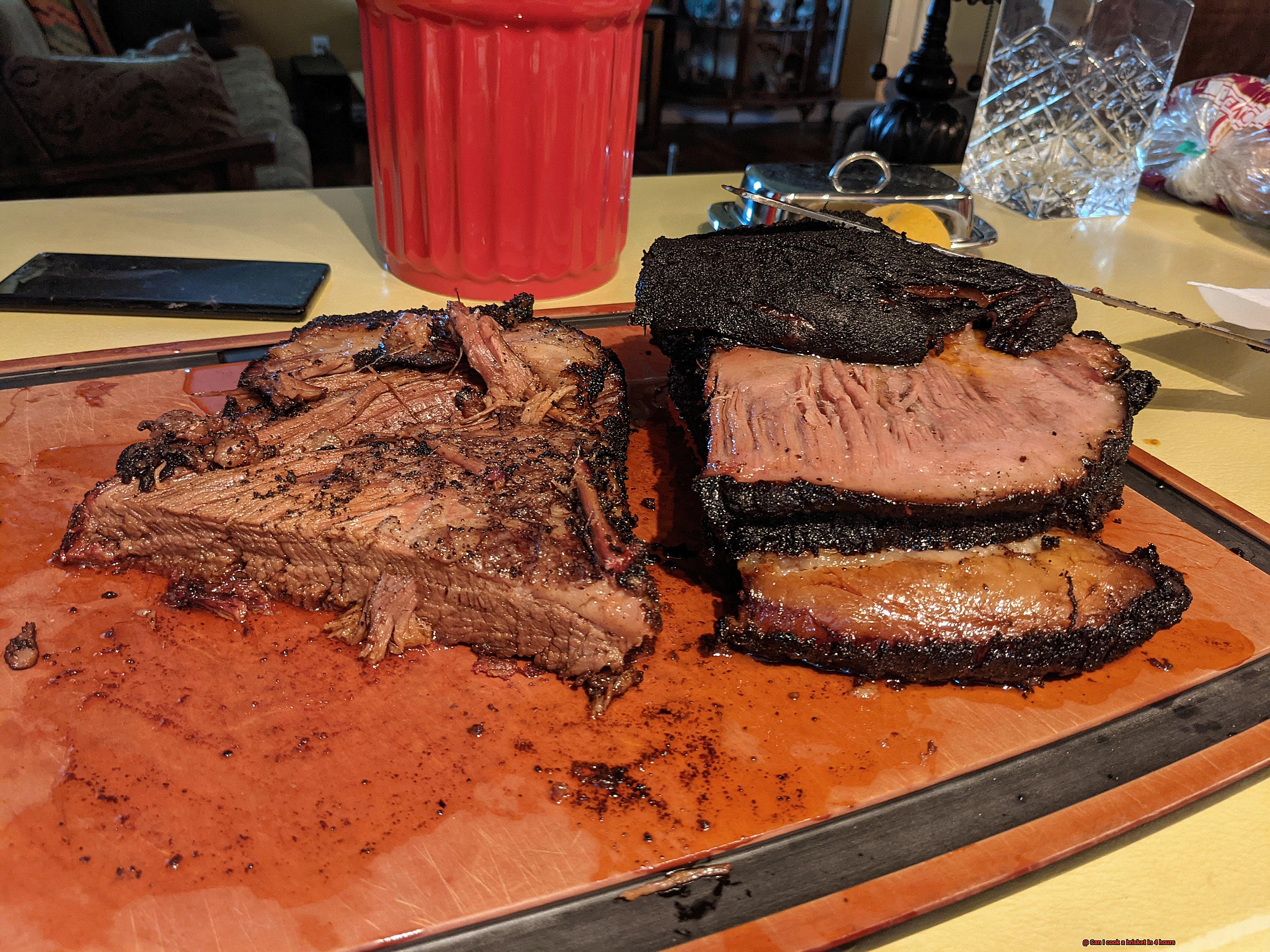
If the thermometer reading indicates that your meat is not fully cooked, adjust the cooking time accordingly. Continue cooking until the internal temperature reaches the desired level of doneness.
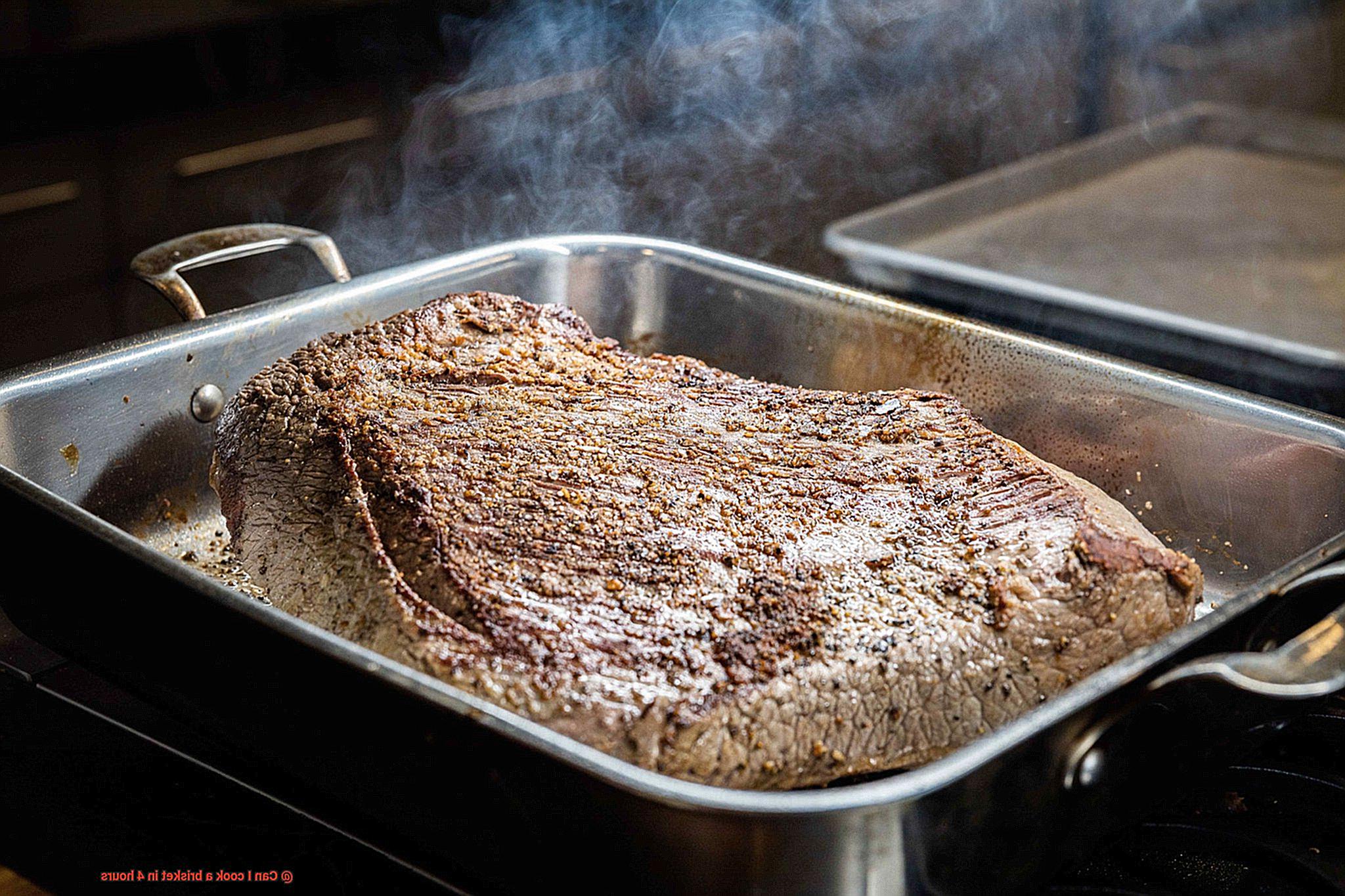
Benefits of Slow Cooking
Look no further than the magic of slow cooking. This method has been a game-changer for cooking brisket and other dishes, infusing them with incredible flavors and turning even the toughest cuts into melt-in-your-mouth masterpieces. In this blog post, we’ll explore the myriad benefits of slow cooking and why it is the preferred method for achieving tender, flavorful brisket and other delectable dishes.
Enhanced Flavors:
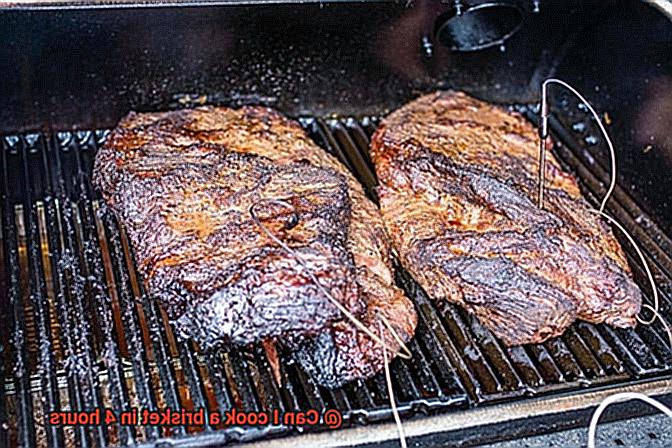
Slow cooking is like a symphony for your taste buds. By allowing ingredients to simmer and mingle over time, it unlocks a world of mouthwatering flavors. As meat and vegetables release their natural juices, they slowly infuse the dish with rich, savory goodness. The result? Tender, succulent meat bursting with delicious taste that will have your family begging for seconds.
Tender Meat:
Say goodbye to chewy brisket forever. Slow cooking is your culinary savior when it comes to tough cuts of meat. Brisket, with its high connective tissue content, can be a challenge. However, when cooked slowly over low temperatures, these connective tissues gradually break down, transforming the meat into a tender delight that practically melts in your mouth.
Nutritional Value Retention:
Slow cooking ensures that your meals are both tasty and nutritious. Unlike other cooking methods that can cause nutrient loss, the long cooking time at low temperatures preserves the vitamins and minerals in your ingredients. This makes slow-cooked meals a guilt-free option for those watching their diet and striving for a well-balanced lifestyle.
Time-Saving:
Contrary to popular belief, slow cooking actually saves you time in the long run. While it requires more initial cooking time, once you’ve set up your slow cooker, you can step away and let it work its magic. No need to constantly monitor or worry about overcooking. Use this time to tackle other tasks or simply kick back and relax, knowing that your meal is slowly simmering to perfection.
Convenience:
Busy individuals rejoice. Slow cookers are the superheroes of the kitchen, making meal preparation a breeze. Prep your ingredients ahead of time, store them in the fridge overnight, and in the morning, transfer everything to the slow cooker. Voila. A delicious, home-cooked meal awaits you at the end of a long day, without spending hours slaving over a hot stove.
Economical:
Who doesn’t love saving money? Slow cooking is not only a culinary delight but also a cost-effective way to prepare meals. Cheaper cuts of meat shine in slow cookers as the gentle cooking process tenderizes them while bringing out their flavors. And if that wasn’t enough, slow cookers consume less energy than other cooking appliances, making them an energy-efficient choice that saves you money in the long run.
X4tqZXRBWuI” >
Conclusion
In conclusion, attempting to cook a brisket in just 4 hours is a recipe for disappointment.
Brisket is a tough cut of meat that requires slow and low cooking to break down the collagen and become tender and flavorful. Rushing the process will result in a tough and chewy brisket that lacks the melt-in-your-mouth goodness we all crave.
So, if you’re looking to impress your guests with a perfectly cooked brisket, be prepared to invest the time and patience it deserves.

